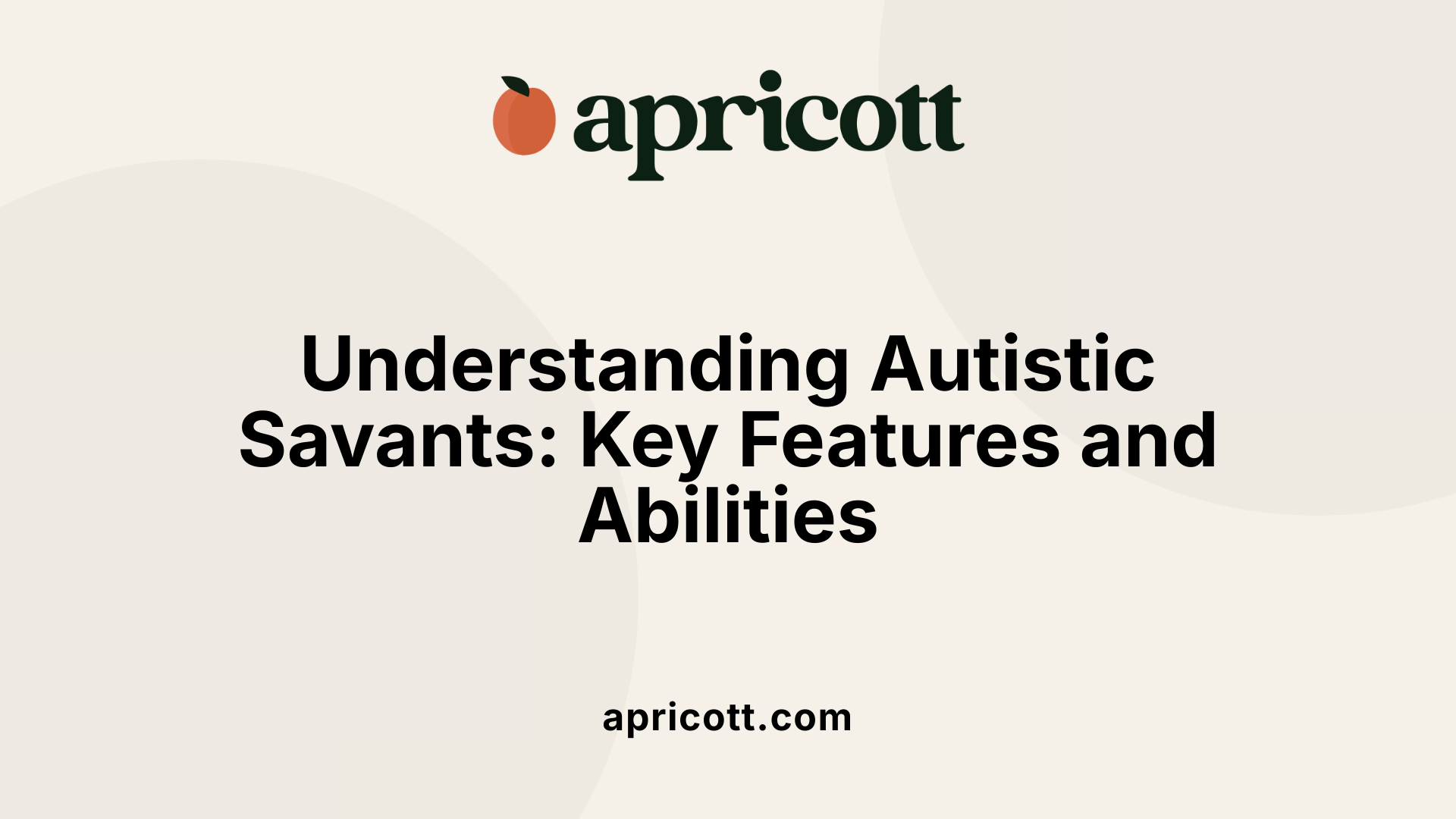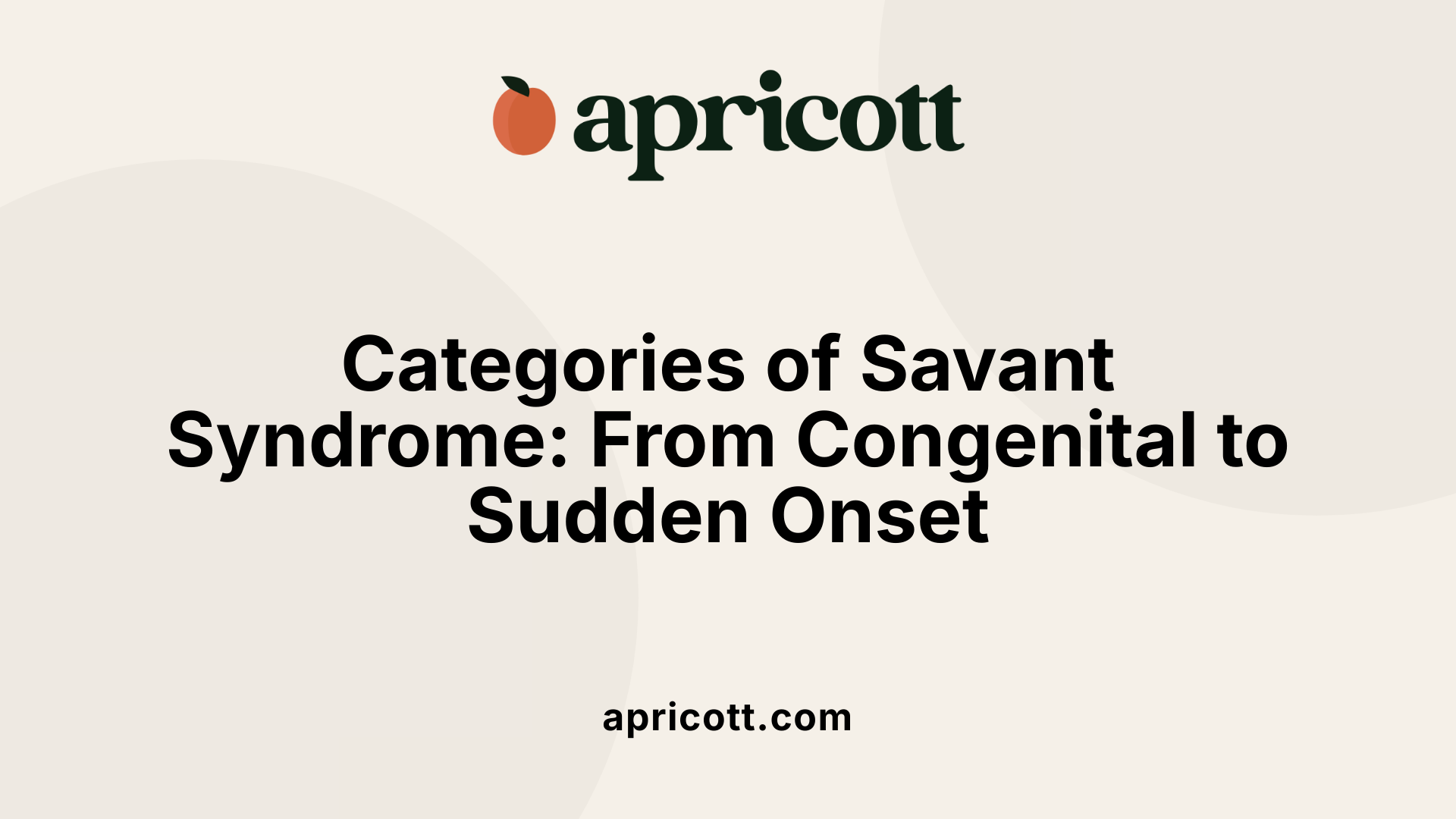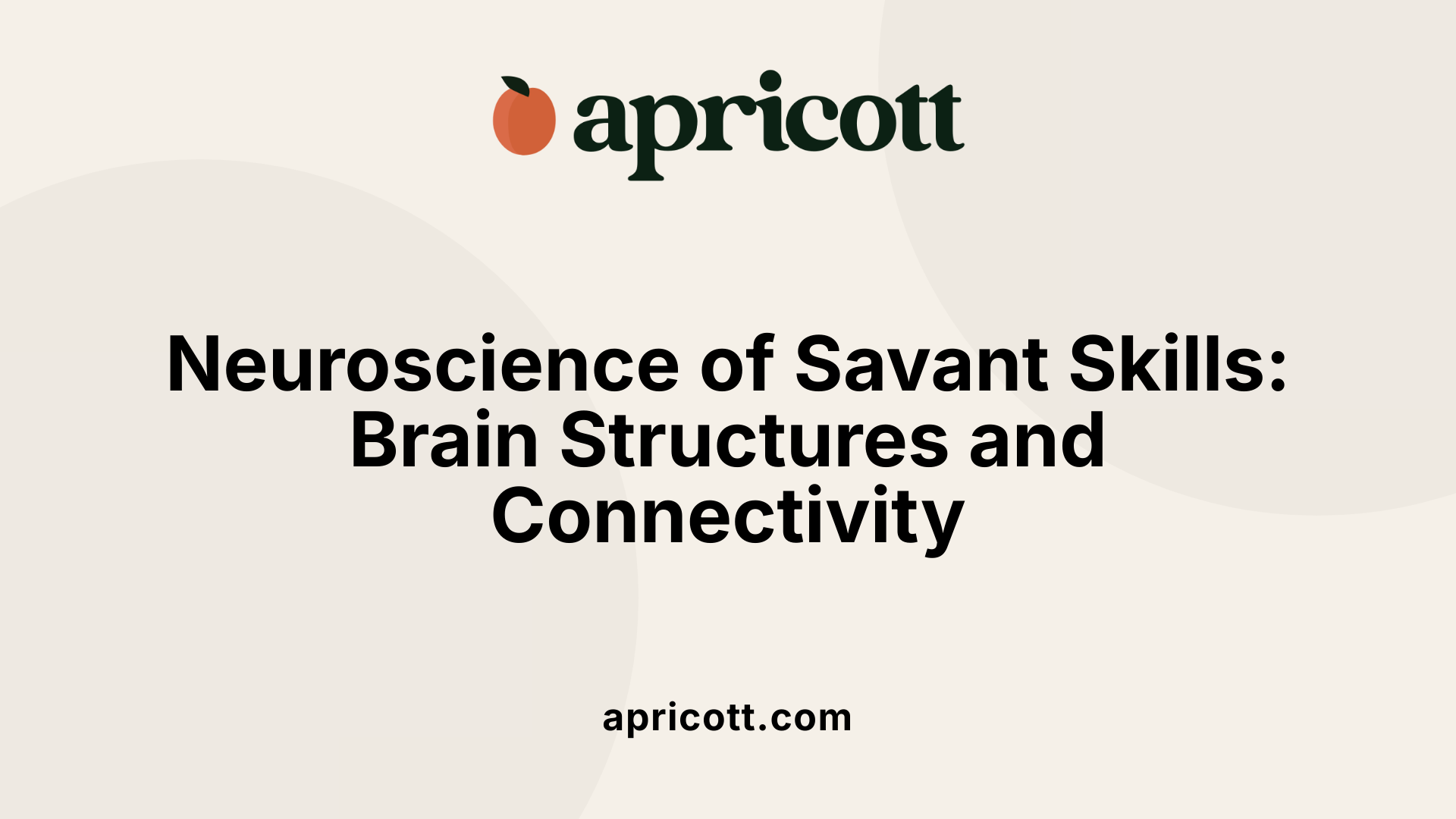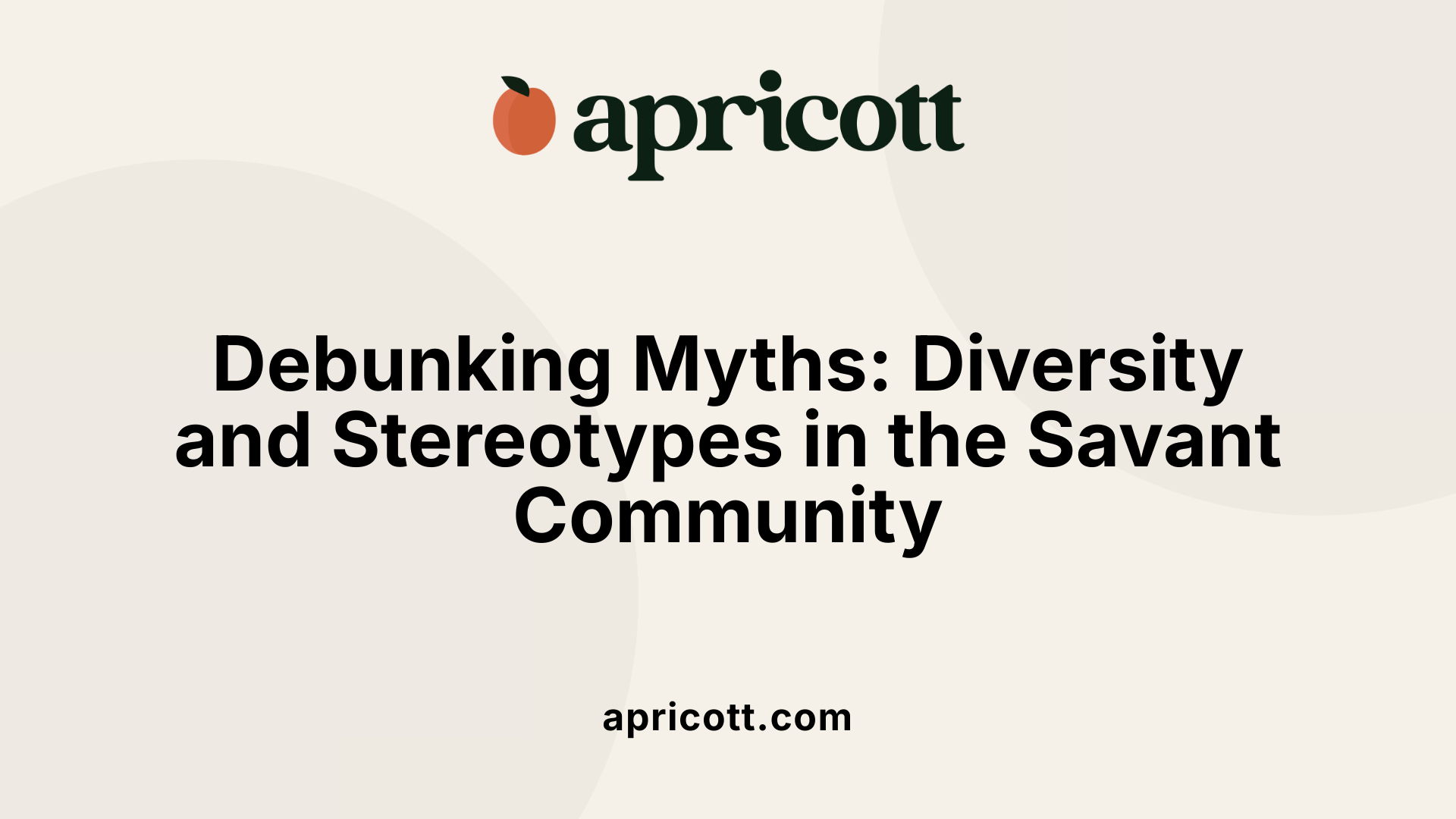July 14, 2025
Unveiling Extraordinary Minds: The Realm of Autistic Savants
Autistic savants are remarkable individuals showcasing exceptional talents amidst developmental challenges. Their abilities span diverse domains such as music, art, mathematics, and memory, often defying conventional expectations about intelligence and social skills. This article explores the complex neuropsychological, historical, and social facets of savant syndrome within the autism spectrum, providing insights into notable cases, underlying neurological mechanisms, and common misconceptions.

An autistic savant is a person on the autism spectrum who demonstrates exceptional skills in specific areas, such as art, music, mathematical calculations, or spatial reasoning. These individuals often possess remarkable memories and abilities that stand out sharply against their social or cognitive challenges. Savant syndrome involves a fascinating coexistence of significant developmental or intellectual disabilities alongside extraordinary talents, which can manifest from birth or develop later in life.
Savant syndrome is marked by distinct skills that are usually confined to one or a few domains. The most common abilities include prodigious musical talent, exceptional artistic skills, unmatched memory, and advanced mathematical or calendar calculation skills. Talented savants often show abilities that resemble those of geniuses within their specialty, such as perfect pitch, detailed city landscape drawings, or rapid mental calculations.
Most savants display a clear dissociation between their specific skills and their overall intelligence level. Many have average or below-average IQs, with some scoring around 70, but their exceptional talents make them unique. Savant skills tend to be linked with strong memory capabilities, enabling them to perform extraordinary feats like memorizing thousands of books or reciting Pi to tens of thousands of decimal places.
Autism spectrum disorder (ASD) is highly associated with savant syndrome, with about 10% of autistic individuals exhibiting savant abilities. Research indicates that savant skills are more prevalent in males, with a ratio of approximately 6:1 compared to females. The condition is thought to involve unique neural development patterns, possibly centered around differences in the brain's left and right hemispheres.
Many theories suggest that damage or developmental anomalies in the left brain—especially areas responsible for language and logical processing—may prompt compensatory enhancements in the right hemisphere, which is related to creativity and visuospatial skills. This neural rearrangement may explain the specialized abilities seen in savants. Famous examples include Kim Peek, known for his extraordinary memory, and Stephen Wiltshire, celebrated for his detailed cityscape drawings from memory.
Despite their remarkable talents, most autistic savants face difficulties in social functioning and daily life. However, their talents have inspired research efforts to better understand brain development and to develop supportive environments that enable them to thrive.

Savant syndrome can be categorized into three primary types based on their development and onset. Congenital savants are individuals born with extraordinary abilities, often associated with developmental conditions like autism. These talents may be present early in life and sometimes remain stable over time.
In contrast, acquired savants develop remarkable skills after experiencing brain injury or neurological incidents. This form is often linked to trauma in specific brain regions, such as the left anterior temporal lobe, which may trigger or enhance latent abilities.
Lastly, there are sudden onset savants, who unexpectedly manifest exceptional abilities without prior disabilities or brain injuries. These cases are rare and intriguing, suggesting complex neural mechanisms behind the ability emergence.
Savant skills are generally classified into three categories: splinter skills, talented savants, and prodigious savants.
Splinter skills are isolated and highly specific talents, such as memorizing a sequence of music or recalling obscure trivia. These are often narrow in scope but demonstrate exceptional memory or perceptual capacity.
Talented savants possess notable skills that may not reach genius status but are significantly above average. These talents often include musical performance, artistic creation, or mathematical calculations that stand out from their general cognitive profile.
Prodigious savants exhibit extraordinary, near-genius capabilities in a single area, like advanced mathematical computation or complex musical improvisation. These abilities can sometimes be developed from an early age or follow brain injuries that unlock suppressed skills.
Below is a table summarizing the main types and ability categories:
| Savant Type | Characteristics | Example Abilities |
|---|---|---|
| Congenital Savants | Present from birth, often linked with autism or neurodevelopmental conditions | Artistic talent, musical skills, calendar calculation |
| Acquired Savants | Develop abilities after brain injury or neurological incident | Mathematical skills, memory, artistic talents after trauma |
| Sudden Onset Savants | Unexpected manifestation of skills without prior indication of ability | Exceptional memory or calculation abilities emerging suddenly |
| Ability Category | Description | Typical Skills |
|---|---|---|
| Splinter Skills | Narrow, highly specialized skills | Memorizing musical pieces, trivia, or obscure objects |
| Talented Savants | Notable but not at the genius level, often within a specific domain | Artistic painting, musical playing, arithmetic calculations |
| Prodigious Savants | Show exceptional, sometimes genius-like abilities in specific domains | Complex math, advanced musical improvisation, detailed city drawing |

Savant talents are closely tied to the structure and functioning of the brain. Research suggests that individuals with savant syndrome often exhibit atypical brain features, especially involving increased activity or structural differences in the right hemisphere, which is crucial for spatial, musical, and artistic skills.
Key brain areas include the amygdala, caudate nucleus, and temporal lobes. Disruptions or damage to the left hemisphere, particularly the left temporal lobe, are also common, with compensatory increases in right hemisphere activity. This imbalance appears to unlock remarkable abilities in typically impaired areas.
Advanced neuroimaging has highlighted several structural differences: larger regional volumes in specific cortical areas, altered white matter pathways indicating atypical connectivity, and neurochemical variations like lower levels of gamma-aminobutyric acid (GABA) and glutamate, which influence neural excitability and plasticity.
Modern studies reveal that savant skills originate from complex neural mechanisms, including unusual development and connectivity within neural circuits. These abilities may develop following neural reorganization, especially after brain injury, demonstrating significant neuroplasticity.
Neuroimaging shows increased activity in brain regions associated with memory, calculation, and artistic expression—such as the temporal lobes and parietal areas—supporting the extraordinary skills seen in savants.
Interestingly, some savant abilities emerge in individuals post-injury, suggesting that the brain can reorganize itself in unconventional ways to unlock latent talents. Traits characteristic of autism, like weak central coherence and hyper-systemizing, further enhance the propensity for developing specialized skills by focusing the brain's resources on specific information processing pathways.
Overall, the neurological basis of savant syndrome involves a tapestry of structural, functional, and neurochemical differences that facilitate exceptional abilities despite, or because of, atypical brain wiring.

The concept of savant syndrome has fascinated medical and psychological communities for centuries. The earliest known medical account dates back to 1783, marking the beginning of documented recognition of individuals with extraordinary abilities alongside developmental disabilities.
In 1887, Dr. John Langdon Down introduced the term ‘idiot savant’ to describe youths with severe cognitive impairments who exhibited remarkable talents. His observations provided the first formal recognition that such exceptional skills could coexist with significant intellectual challenges. Early literature and case reports helped establish that savant skills, although rare, could appear in conjunction with mental retardation or developmental disorders.
Throughout history, several individuals have exemplified extraordinary savant abilities. Kim Peek, known for memorizing over 12,000 books including the Bible, was the basis for the character in the film

Many people hold misconceptions about savant syndrome. A prevalent error is the belief that all autistic individuals are savants or that savant skills are supernatural or magical abilities. This is false; savant syndrome affects a small subset of autistic people, roughly 10%, and not all individuals with autism exhibit such extraordinary skills.
Another misunderstanding is the assumption that savant abilities are linked solely to low IQ. In reality, many savants demonstrate average or above-average intelligence in other domains. For example, some have exceptional memory or artistic skills yet still face significant social and cognitive challenges.
This oversimplification leads to a narrow view of autism and savant syndrome. It contributes to stereotypes that depict autistic individuals as one-dimensional or as possessing
Many autistic savants encounter significant obstacles in social interaction, communication, and employment. Their extraordinary talents are often overshadowed by ongoing developmental disabilities, making it difficult for others to recognize their potential. This lack of recognition can lead to feelings of isolation, social exclusion, and stigma. Furthermore, traditional environments—such as workplaces or schools—may not be adapted to accommodate their unique abilities, which can hinder their opportunities for meaningful participation and fulfillment.
Enhancing support for autistic savants involves creating more flexible and understanding environments. Workplaces should incorporate accommodations that recognize their talents, such as specialized roles that leverage their skills in art, music, or mathematics. Educational systems need to focus on identifying and nurturing savant skills early, providing tailored programs that foster both personal growth and skill development. Community awareness initiatives are essential to dispel misconceptions, reduce stigma, and promote acceptance.
Providing access to mentorship and resources can empower autistic savants to reach their full potential. Inclusive opportunities for employment and social engagement not only benefit individuals but enrich society by tapping into these remarkable abilities. Ultimately, fostering an environment that values and supports savant talents can lead to more inclusive, innovative, and compassionate communities.
| Aspect | Focus Area | Suggested Strategies |
|---|---|---|
| Challenges | Social, Employment | Awareness campaigns, workplace accommodations |
| Support Needs | Education, Community | Early recognition, tailored programs, mentorship |
| Goals | Inclusion, Recognition | Promoting understanding, reducing stigma, fostering talent |
Looking ahead, scientific studies are expected to expand our understanding of the neural and genetic underpinnings of savant syndrome. Researchers are particularly interested in how brain plasticity, neurochemical processes, and neural connectivity contribute to the emergence of extraordinary skills. Advances in neuroimaging techniques, like functional MRI and diffusion tensor imaging, are helping scientists visualize brain activity and structure differences in savants versus neurotypical individuals. Additionally, genetic analysis aims to identify inherited factors or mutations that may predispose certain individuals to develop savant skills.
This growing knowledge could lead to innovative approaches in targeted interventions or talent development programs. For example, understanding how certain brain regions compensate for others might pave the way for therapies aimed at enhancing specific abilities in individuals with developmental disabilities. Ethical considerations remain at the forefront; researchers emphasize the importance of respecting the autonomy of autistic savants and avoiding exploitation. Ensuring that research benefits are equitably distributed and that individuals' rights are protected is essential for future advancements.
The potential to harness and nurture savant skills offers exciting opportunities in education, therapy, and the arts. Educators and therapists could develop specialized training programs that leverage these extraordinary abilities to improve life skills, communication, and social integration for individuals with autism and other developmental disorders.
However, significant challenges also exist. One of the main obstacles is creating equitable access to resources and support, which remains limited in many communities. There's a risk of perpetuating stereotypes that can overshadow the diversity within the autistic population. It is crucial to promote inclusive environments that recognize individual strengths and differences.
Moreover, balancing the celebration of savant talents with the acknowledgment of ongoing disabilities is essential. Respecting personal autonomy and avoiding claims of 'cure' or normalization will foster a more respectful approach to future developments.
Overall, continued research, ethical mindfulness, and inclusive practices are vital for unlocking the full potential of autistic savants and ensuring their talents benefit both individuals and society.
Autistic savants exemplify the extraordinary potential that can lie within neurological differences. While their talents are rare, they challenge our notions of intelligence, creativity, and human capability. Moving forward, fostering awareness, reducing misconceptions, and supporting inclusive environments are essential steps in celebrating diversity and empowering these remarkable individuals to reach their fullest potential.